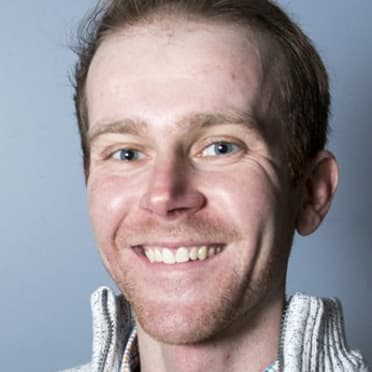Mitch Haniger believes he’s rooted out the cause for the injuries that have kept him out of Major League action for more than 600 days, and he’s spent the past year tailoring a training plan to combat them. The result has Haniger saying that his swing in the best spot its ever been.
Movement imbalances, Haniger says, played a significant part in the endless setbacks he experienced since being initially sidelined with a ruptured testicle in June 2019. That’s what led him to Austin Einhorn and the Apiros training facility near the Bay Area. And anyone who follows Haniger on social media has gotten a glimpse at his specialized rehab.
“We do some things that are, for lack of better words, a little crazy, but definitely not unsafe by any means,” Haniger said. “And it's been fun.”
By enlisting Apiros, Haniger has focused much more on climbing, swinging, hanging and improving core strength. Haniger trains at Apiros three times per week for roughly a 10-hour aggregate. He will sometimes go in for a fourth session specifically to work on his swing and field work, and he’s completed more than 50 sessions over the past year.
Because Haniger intends to maintain the practices he’s absorbed from Apiros, Einhorn consulted Mariners assistant hitting coach Jarret DeHart before diving in with Haniger on the mechanics of the swing that made Haniger an All-Star in 2018, when he hit .285/.366/.493 with 26 homers, 93 RBIs and a 139 OPS+ for the 89-win Mariners.
The three discovered that Haniger wasn’t generating nearly as much movement as he should from his thoracic spine and rib cage. But by better optimizing his movement, the result has Haniger feeling much stronger as he gears up for his most critical Spring Training yet.
“The body is really smart. If it can’t get the motion that it wants to, that’s going to be diverted to somewhere else. And for him, I thought it was his lower back,” Einhorn told MLB.com. “So for him, what we did is actually just not try to change his swing, but just change his body so that he could have more access to these areas that didn't have his control.
“It was all movement, contraction-based. How do we get his muscles, enclosed by his ribs and in between his ribs to be under his control? And then there is awareness. And once we fine-tune that part of his spine, that's when [DeHart] came out and was like, ‘Wow, his swing looks even better. We've been trying to make these changes for a long time. We just couldn't.’ And that's because they were going about it from a skill perspective instead of from a movement perspective.”
“My swing has never felt this good in an offseason before. I think a lot of that is because I've never moved this way before,” Haniger said. “And I think I get into better positions than I have been able to in the past. I think my body is moving better than I ever have."
Haniger and Einhorn first connected through one of the right fielder’s childhood friends, before Haniger underwent back surgery last January while gearing up for Spring Training. That followed his adductor tear surgery in September 2019 while attempting a late-season comeback. Both resulted from overcompensating during rehab.
“Every surgery sucks,” Haniger said. “They're never fun, and it's never something you want to go through. But I think I'm better for having gone through it. And I knew that getting both procedures -- my adductor tear and my back -- only is going to set me up for more success now, and I feel better than ever now. So that's kind of how I just choose to look at it. I think injuries can derail your career. But at the same time, I think you can come back stronger from them, if you put in the time and learn your body better and kind of understand why those things happen. And I think I've had a good handle on things.”
Haniger now faces a Spring Training that Mariners manager Scott Servais says the club will approach with some caution. At this time last year, Haniger had lost 20 pounds of muscle mass, then he was away from the team during the quarantine shutdown, and he never truly returned because he was on the 60-day injured list, which prohibited him from working out with the club due to health and safety measures.
So, in a sense, the Mariners are returning a player they haven’t seen in some time -- and one they need if they hope to take an offensive step forward.
“The easy identification is, when Mitch Haniger is healthy, he is our best player,” Mariners general manager Jerry Dipoto said. “Mitch is a multi-skilled, well-rounded, diverse player who, when we've seen him at the top of his game, is really one of the more complete players in the American League. And if we can get some version of that Mitch Haniger back on the field, it really changes our arc.”
